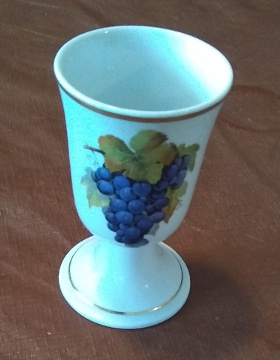
 |
Here is a summary of differences noticed:
- The sacrament is administered by only one priest or elder (D&C 20:76).
- The sacrament is to be taken only by confirmed members of the Church. It is not for guests nor young children who have not promised to take upon themselves the name of Jesus, to always remember Him, and to always keep His commandments.
- The entire congregation kneels with the administrator during the prayers (D&C 20:76).
- Unbroken bread would be picked up and presented to God during the prayer asking Him to bless it. This follows the example of the Savior (Mat. 26:26, Mark 14:22). Although that is not explicitly specified in the modern instructions, it was implied by the word "also" in the instructions for the wine: "The manner of administering the wine--he shall take the cup also" (D&C 20:78).
- Following the example of Jesus (Mat. 26:26, Mark 14:22), the bread would be blessed before it is broken, representing how the body of Jesus was anointed (blessed) before it was broken at the Crucifixion. Partaking of the bread reminds us that Jesus overcame physical death.
- The administrator is the first to partake because one should receive an ordinance before administering it to others. Others are served in any order, not esteeming any one member to be above another.
- Wine would be used as directed by the Lord (D&C 89:5-6). It represents the blood shed by the Savior and His overcoming spiritual death. Red wine will be used in today's service because it is bitter, representing both the color of blood as well as the bitter suffering of the Savior in Gethsemane. Our wine was not of our making, even though that is recommended (D&C 89:6). What about young members or others who did not want to drink wine? At the sacrament service I attended in Brazil, they were free not to drink, but grape juice or water was not offered as a substitute for wine.
- Only one cup is used for the wine. This follows the example of Jesus (Mat. 26:27, Mark 14:23), and also the instructions to the modern Church (D&C 20:78), as well as the example shown at the sacrament service which I attended in Brazil. It was for some 60 people, and I wondered how they would solve the problem of not having a huge cup. The cup used would serve some 10-15 people. When it became empty, a second elder walking with him refilled it from a pitcher. It seemed likely that if the congregation were too large that the sacrament would not be served. The usual weekly Sunday fellowship meetings are held in homes, so that would not be a problem there.
- The cup of wine would be picked up and presented to God during the prayer asking Him to bless it. This follows the example of the Savior (Mat. 26:27, Mark 14:23), and also the instructions to the modern Church (D&C 20:78).
There is a recent article by Mauricio about the importance of not changing ordinances, focusing especially on the sacrament, on the official Church website.